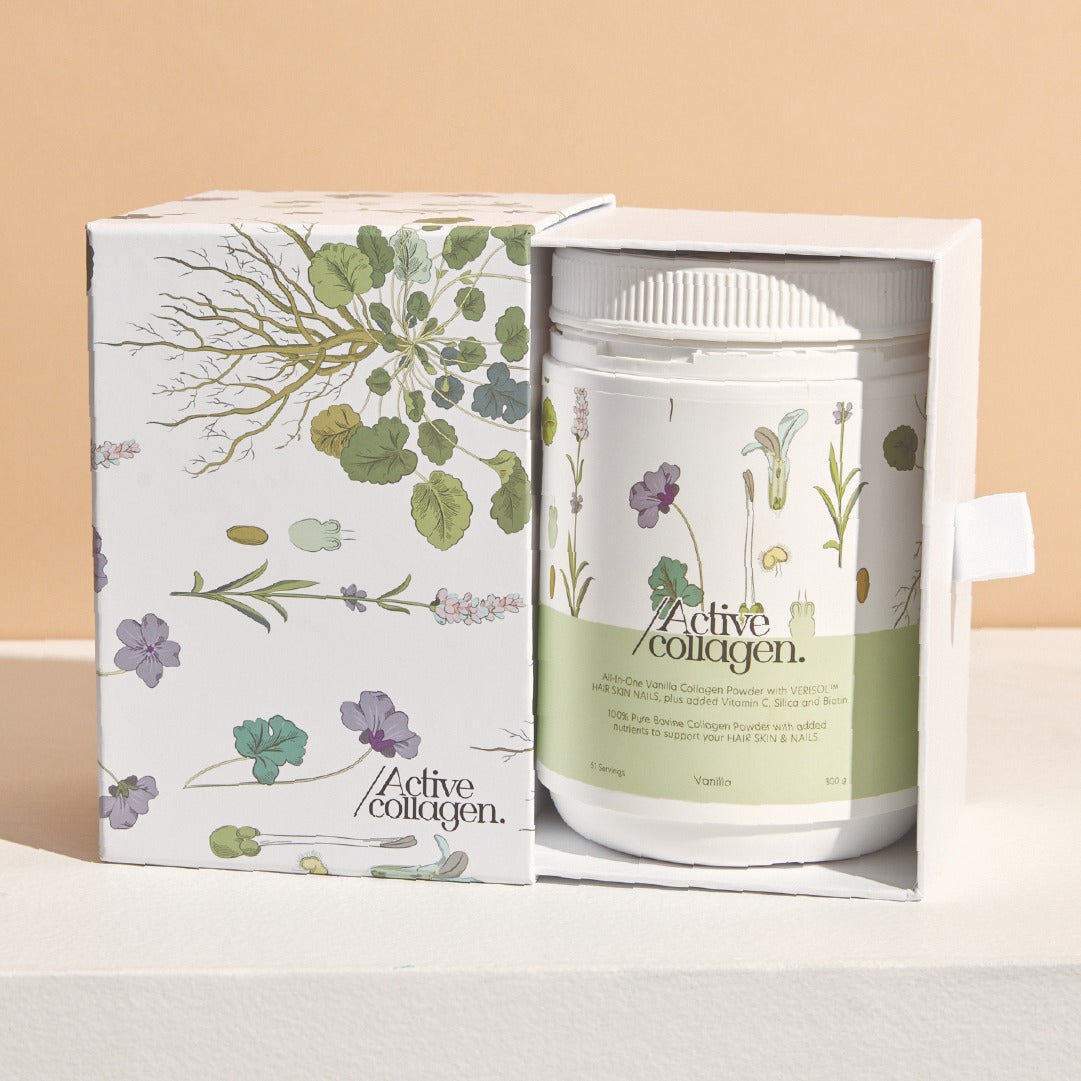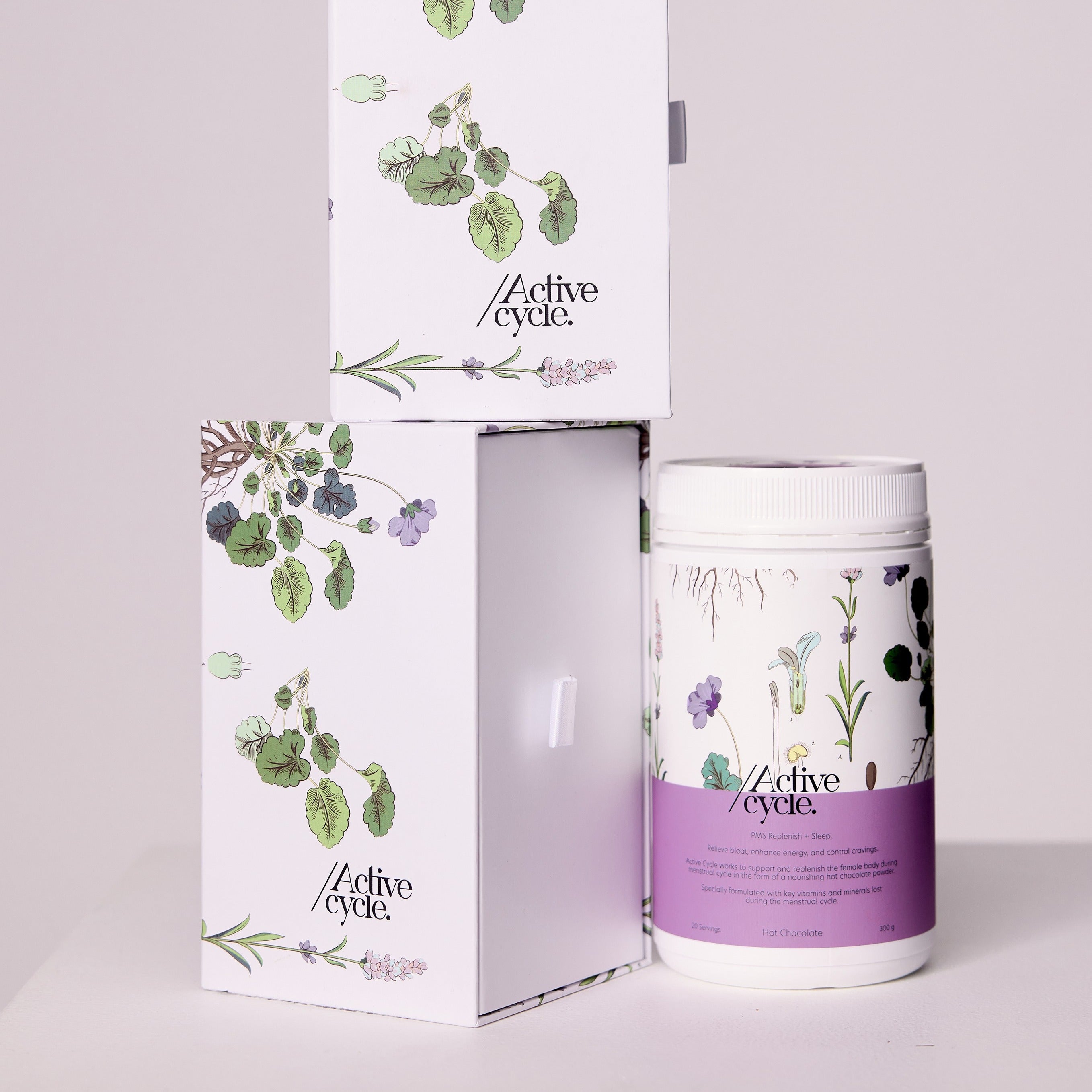Women, stereotypically, are usually more attentive when it comes to supporting their skin – moisturising, cleansing, masking, toning, the list is endless! However, as we age we may not consider linking the effects of changing hormones with the appearance and condition of our skin. But modifications in hormone levels during menopause can in fact have a significant impact on the skin.
Menopause is a time, typically starting between the ages of 45-55, of profound change when it comes to women’s hormones. And unfortunately one that many women commonly find themselves silently struggling through. The most drastic change is that oestrogen levels become hypo-oestrogenic, a state of low oestrogen. But how does this have anything to do with the signs of skin aging such as sagging, wrinkling and a loss of fullness?
Oestrogens Effect on the Skin
Within the skin sit oestrogen receptors which circulating oestrogens latch onto. To put it visually, think of this as a kind of lock and key system – the receptor being the lock and oestrogen the key. These receptors are found to be most abundant within our face and legs.
During menopause, as circulating oestrogen levels begin to fall so do the number of oestrogen receptors due to lack of need. Usually, this lock and key system elicits effects such as reducing trans epidermal water loss, which is responsible for keeping our skin looking full and plump, and of course preventing collagen loss – a key player in skin ageing.
Studies have shown that a deficiency of oestrogen, such as the hypo-oestrogenic state following menopause, has strong correlations with the rapid decrease in collagen content within the skin. Collagen is estimated to decline at a rate of around 2% per year post menopause for the next 15 years, double the rate that collagen is lost in premenopausal skin. The effects this amount of collagen loss has on the skin is evident when we consider the physical changes seen in the skin during this stage of life.
Not only does the loss in collagen leave the skin with reduced elasticity, fullness and strength – measured by pulling the skin and noticing the time taken for it to rebound back (known as skin turgor) - but also impacts the skins’ ability to heal. Other than for general physical appearance, collagen’s further role in skin health is in the stages of wound healing. Cells within the skin, like fibroblasts, create collagen proteins which are deposited at the site of the healing wound in different stages. This generally proceeds for a few months in the wound healing process; however, this process is extended when collagen levels within the skin are less abundant.
The development of falling oestrogen levels is a natural chronological process in a woman’s life. Whether menopause hits you like a tonne of bricks or not, the effects that lowered oestrogen levels have on our skin and collagen are intrinsic – they’re an inevitable biological process. Although, there are some factors that can be incorporated into your daily life to begin combatting waning oestrogen and collagen levels before, during and well after menopause.
Including Phytoestrogens
What are phytoestrogens? Phytoestrogens are a type of phytonutrient, hence the name. Phytonutrients are beneficial substances that are provided through our diets from plant sources and their effect within plants is to protect them from harm such as insects and UV. Though when ingested by humans, phytoestrogens elicit some pretty impressive effects.
Phytoestrogen compounds within plants act in our bodies with similar oestrogen-like effects. The two main types are isoflavones, abundantly present in soy, and lignans, found in legumes, grains, fruits and vegetables, and flaxseed. The oestrogen-like effects come from the structure of the two types which mimic that of oestrogen. In states of low circulating oestrogen phytoestrogens are able to act on oestrogen receptors to boost levels whereas in states of high oestrogen exert the opposite effect by which lowering oestrogen levels.
The use of phytoestrogens in treating or managing menopausal symptoms is gaining a lot of attention in regard to taking on a more holistic approach rather than leaning on hormone replacement therapy. The positive effects of phytoestrogens in menopause is observed in Asian populations where diets are high in phytoestrogen sources therefore boosting circulating oestrogen levels, and cardinal menopausal symptoms – hot flashes, night sweats – are less frequently experienced.
Ways to incorporate phytoestrogens into your diet: mixing flaxseed meal into yoghurts, smoothies, granolas and baked goods, opting for tofu and edamame beans as a protein source at meals, roasted chickpeas and hummus as snacks, wholegrain bread over white, and hitting your 2 serves of fruit/five serves of vegetables every day.
Support Collagen Levels
Although collagen levels are declining at a more rapid rate during menopause, we can still help replenish lost stores to support declining levels. And this doesn’t have to start just as menopause begins. We can begin supporting our collagen levels at any stage of life.
The most widely studied and utilised way to boost collagen is through oral supplementation. Hydrolysed collagen supplements provide the body with bioavailable essential amino acids, smaller proteins, necessary for the body to synthesise the large collagen proteins. These include the 3 crucial amino acids in collagen formation; glycine, proline and hydroxyproline.
Supplementation with collagen for combatting skin aging has shown various positive outcomes. In one clinical trial containing 95% women between the ages of 20-70 years, after only 90 days of oral hydrolysed collagen supplementation visible reductions in skin aging were evident as reduced wrinkles, improved hydration and elasticity.
Opposed to topical collagen applications, oral collagen intakes are able to infiltrate the skin at a greater degree increasing amounts of collagen within the dermal layers. And when choosing an oral collagen supplement, there are a few key factors to consider in order to reap the most benefits.
Active Collagen All-In-One Hair Skin and Nails is a 100% pure bovine collagen powder with added nutrients like vitamin C to enrich and promote the absorption and effects of collagen within the body. We pride ourselves in providing a high-quality collagen supplement with proven benefits to help replenish declining collagen stores, and reduce the signs of aging linked to the hypo-oestrogenic levels caused by menopause. Incorporate a premium collagen like Active Collagen into your everyday regime to support post-menopausal aging.
Kamp, E., Ashraf, M., Musbahi, E., & DeGiovanni, C. (2022). Menopause, skin and common dermatoses. Part 2: skin disorders. Clinical and experimental dermatology, 47(12), 2117–2122. https://doi.org/10.1111/ced.15308
Calleja-Agius, J., Brincat, M., & Borg, M. (2013). Skin connective tissue and ageing. Best practice & research. Clinical obstetrics & gynaecology, 27(5), 727–740. https://doi.org/10.1016/j.bpobgyn.2013.06.004
Lephart, E. D., & Naftolin, F. (2022). Factors Influencing Skin Aging and the Important Role of Estrogens and Selective Estrogen Receptor Modulators (SERMs). Clinical, cosmetic and investigational dermatology, 15, 1695–1709. https://doi.org/10.2147/CCID.S333663
Mathew-Steiner, S. S., Roy, S., & Sen, C. K. (2021). Collagen in Wound Healing. Bioengineering (Basel, Switzerland), 8(5), 63. https://doi.org/10.3390/bioengineering8050063
Chen, M. N., Lin, C. C., & Liu, C. F. (2015). Efficacy of phytoestrogens for menopausal symptoms: a meta-analysis and systematic review. Climacteric : the journal of the International Menopause Society, 18(2), 260–269. https://doi.org/10.3109/13697137.2014.966241
de Miranda, R. B., Weimer, P., & Rossi, R. C. (2021). Effects of hydrolyzed collagen supplementation on skin aging: a systematic review and meta-analysis. International journal of dermatology, 60(12), 1449–1461. https://doi.org/10.1111/ijd.15518
Al-Atif H. (2022). Collagen Supplements for Aging and Wrinkles: A Paradigm Shift in the Fields of Dermatology and Cosmetics. Dermatology practical & conceptual, 12(1), e2022018. https://doi.org/10.5826/dpc.1201a18




